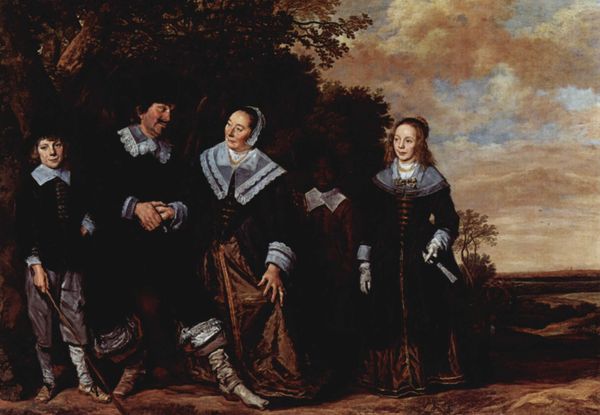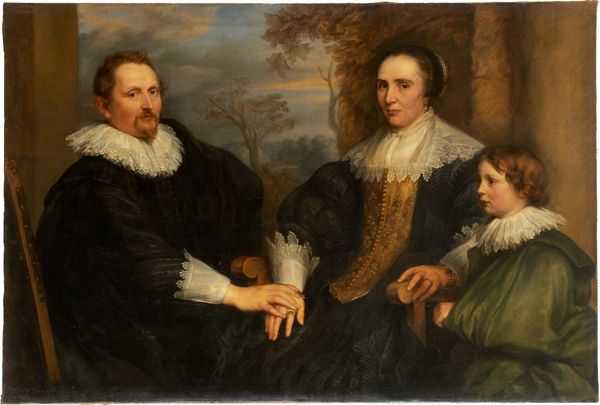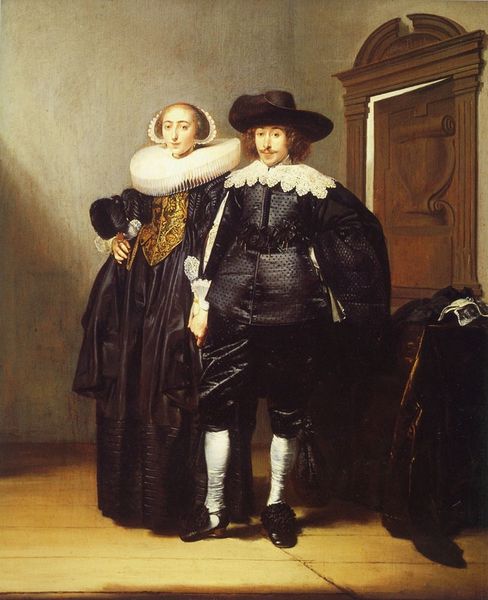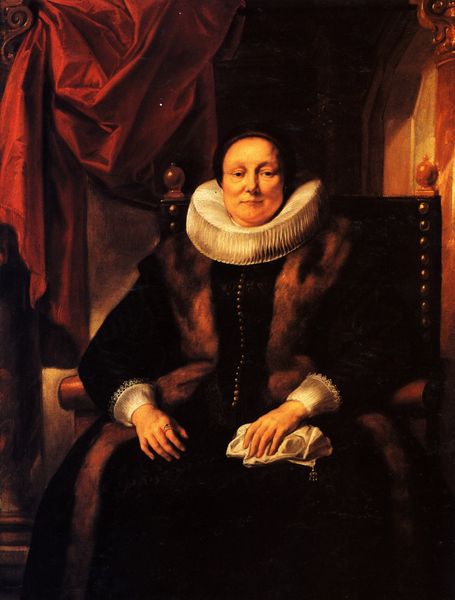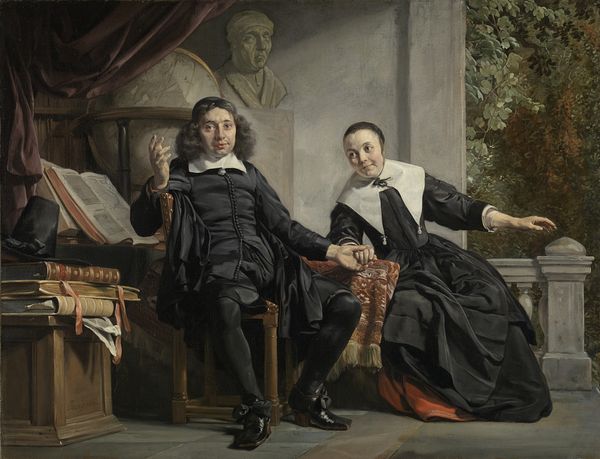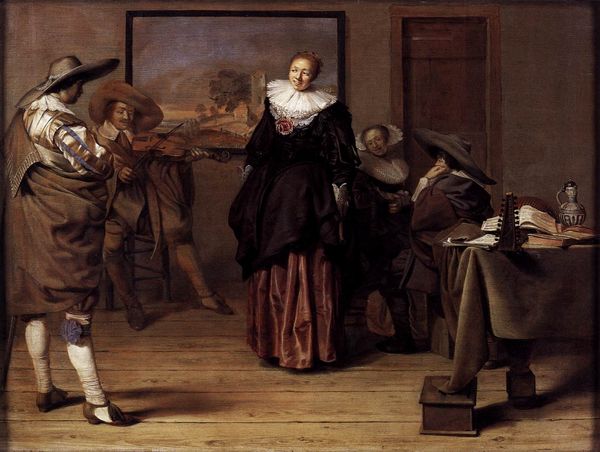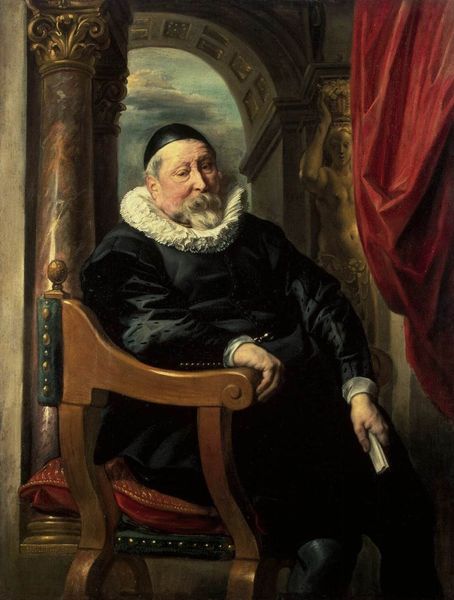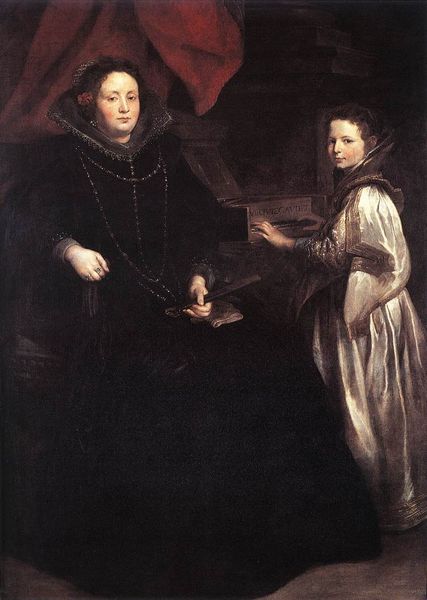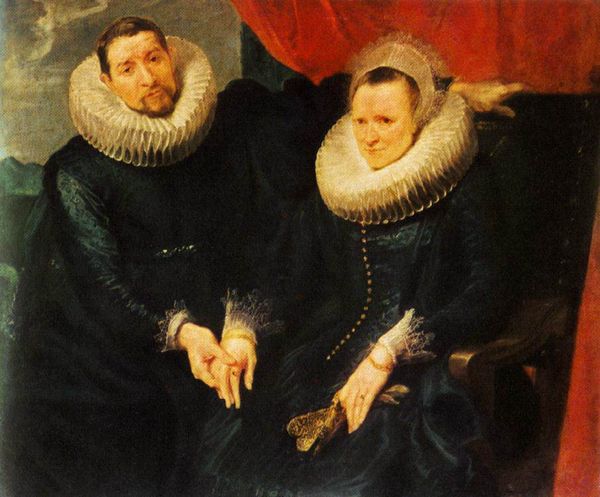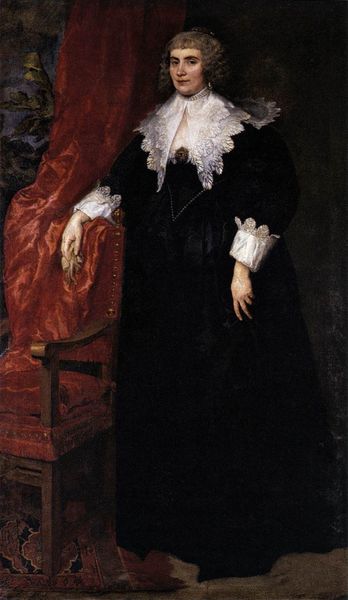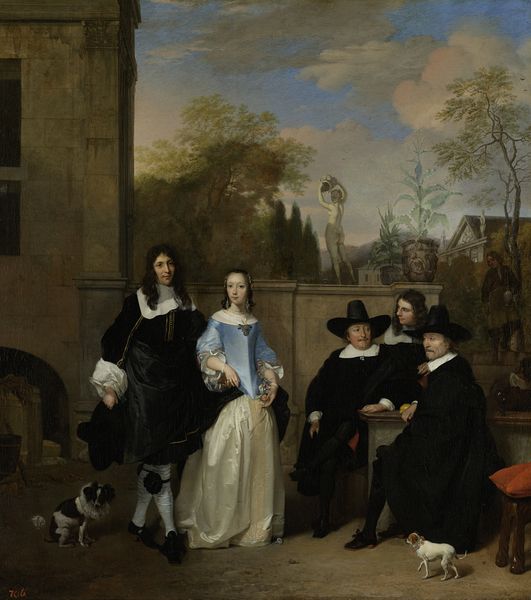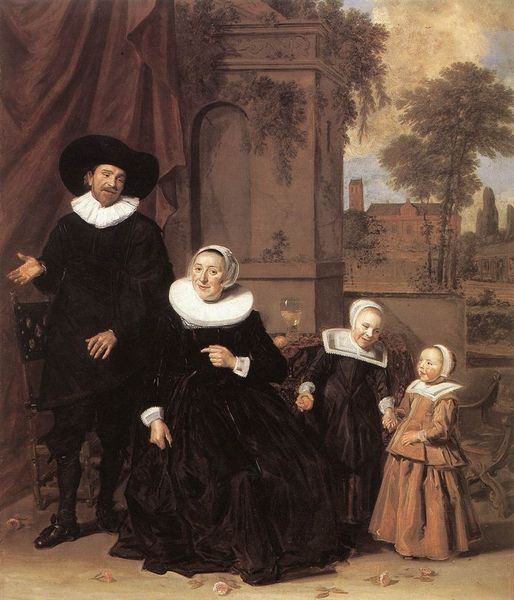
painting, oil-paint
#
portrait
#
baroque
#
painting
#
oil-paint
#
group-portraits
#
genre-painting
#
realism
Dimensions: 213.3 x 189 cm
Copyright: Public domain
Curator: We’re looking at "Govaert van Surpele and his wife," painted in 1639 by Jacob Jordaens. It’s currently housed at the National Gallery in London. Editor: My first impression is the darkness of their clothing and then that small, almost luminous dog near the bottom, like a fuzzy little exclamation point! There's such an interesting interplay of heavy fabrics and fine lace. Curator: That dog might represent marital fidelity, but there's more to unpack. The composition hints at status and social mobility, doesn’t it? See the crest above the archway, and the exotic parrot; what stories might they tell about the sitters? Editor: Indeed, the use of imported pigments alone speaks volumes about wealth. Think of the ultramarine blues probably ground from lapis lazuli; those fabrics would have required specialized workshops, complex global trade networks. Even the act of commissioning such a painting reflects power. Curator: Absolutely. The parrot, also expensive, perhaps symbolizes worldly wisdom, though some saw it as a symbol of vanity or even sin. Note also how the walking stick visually connects husband and wife, an assertion of domestic stability? Editor: It is curious, that stiff formality in how they stand – not at all relaxed. Considering the artist's choices for such a portrait--the canvas itself, the cost of oil paint, the hours spent modeling-- it suggests they’re consciously constructing an image for posterity. Curator: Jordaens really captures the textures, the gleam of jewelry against the dark cloth. It reminds us that even the most straightforward realism carries symbolic weight. Editor: The level of detail on that lace collar! That alone probably took days for some poor soul to craft, while the subjects likely stood for hours while it was recreated in oil paint. I’m so curious about who labored over these things, visible and invisible within the frame. Curator: Examining the materials and cultural context has certainly helped deepen my reading of what could otherwise be a fairly traditional double portrait. Thank you. Editor: My pleasure. I’m now even more intrigued by the story of how this work was created, traded, and viewed throughout its history.
Comments
No comments
Be the first to comment and join the conversation on the ultimate creative platform.
